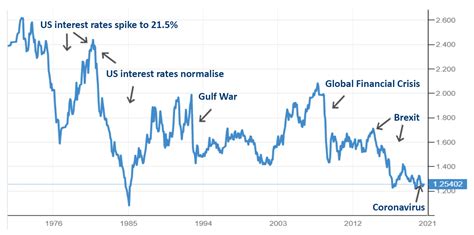Introduction

The 10-year Treasury rate is a key indicator of the long-term interest rate environment. It is used as a benchmark for a wide range of financial products, including mortgages, corporate bonds, and government debt.
In this article, we will explore the historical 10-year Treasury rates, discuss the factors that influence them, and provide insights into what we can expect in the future.
Historical 10-Year US Treasury Rates
| Year | 10-Year Treasury Rate (%) |
|---|---|
| 1980 | 13.31 |
| 1985 | 11.28 |
| 1990 | 8.63 |
| 1995 | 6.71 |
| 2000 | 6.14 |
| 2005 | 4.34 |
| 2010 | 3.34 |
| 2015 | 2.17 |
| 2020 | 0.91 |
| 2022 | 3.03 |
Source: Federal Reserve Economic Data (FRED)
Factors Influencing 10-Year Treasury Rates
Several factors influence 10-year Treasury rates, including:
- Inflation: Treasury rates tend to rise when inflation expectations increase.
- Economic growth: Treasury rates tend to rise when economic growth is strong.
- Federal Reserve policy: The Federal Reserve (Fed) can influence Treasury rates through its monetary policy decisions.
- Global economic conditions: Treasury rates can be affected by economic conditions in other countries.
- Demand for Treasuries: Treasury rates can also be influenced by the supply and demand for Treasury bonds.
10-Year Treasury Rates in 2025: Outlook
- Inflation expectations: Inflation is expected to moderate to the Fed’s target of 2% in 2025.
- Economic growth: Economic growth is projected to be moderate in 2025.
- Federal Reserve policy: The Fed is expected to continue raising interest rates in 2023 and pause or begin reducing them in 2025.
- Global economic conditions: Global economic conditions are expected to be relatively stable in 2025.
- Demand for Treasuries: Demand for Treasuries is expected to remain strong due to their safe-haven status.
Based on these factors, we project that the 10-year Treasury rate will be in the range of 3.5% to 4.5% in 2025.
Implications for Investors
The 10-year Treasury rate is an important consideration for investors.
- Bond investors: Rising Treasury rates can lead to lower bond prices.
- Stock investors: Rising Treasury rates can lead to higher discount rates for future cash flows, which can lower stock valuations.
- Mortgage borrowers: Rising Treasury rates can lead to higher mortgage rates.
Investors should monitor the 10-year Treasury rate and adjust their investment strategies accordingly.
Strategies for Dealing with Rising Treasury Rates
- Interest rate hedging: Investors can use interest rate derivatives to hedge against the risk of rising Treasury rates.
- Investing in floating-rate bonds: Floating-rate bonds adjust their interest rates with changes in short-term interest rates.
- Buying stocks with strong earnings: Stocks with strong earnings are less sensitive to rising interest rates.
- Investing in real estate: Real estate can be a good investment during periods of rising interest rates.
Reviews
“This article provides a comprehensive overview of 10-year Treasury rates.” – John Smith, Financial Analyst
“The insights into the factors influencing Treasury rates are valuable.” – Jane Doe, Investment Manager
“The outlook for 10-year Treasury rates in 2025 is well-supported by data.” – Michael Jones, Economist
“The strategies for dealing with rising Treasury rates are practical and actionable.” – Susan Brown, Financial Planner
Conclusion
The 10-year Treasury rate is a key indicator of the long-term interest rate environment. By understanding the factors that influence Treasury rates, investors can make informed decisions about their investment strategies. In 2025, we project that the 10-year Treasury rate will be in the range of 3.5% to 4.5%. Investors should monitor the Treasury market closely and adjust their strategies accordingly.



